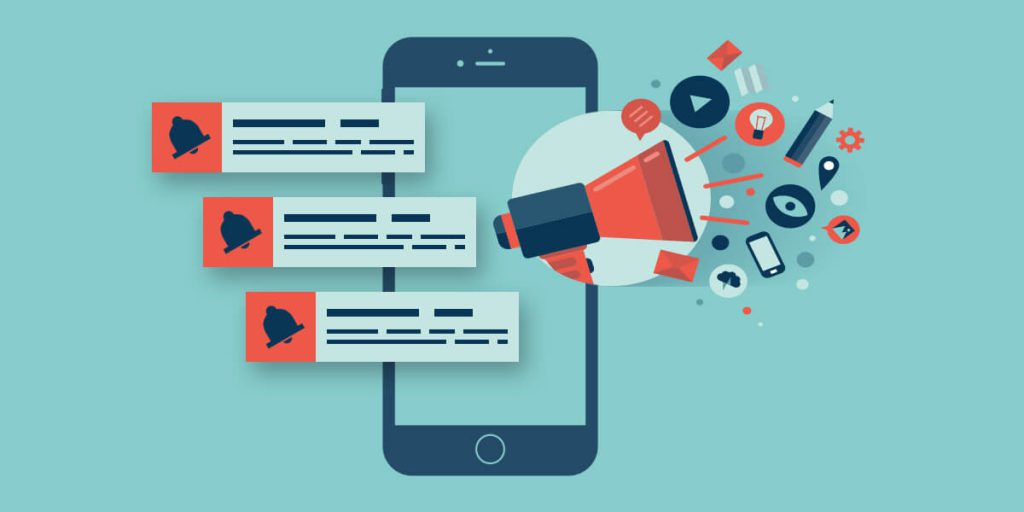Why You Should Integrate Real-Time Features in Your Mobile App
- Mobile
- May 20, 2019
Using real-time features in your mobile app is no longer an option, it is a necessity. Most business apps come with features like push notification, real-time feed, instant messaging and tracking live order status. Real-time technology delivers information to the users in actual-time scenario.
This technology has made itself evident in mobile and web app development in the last few years to a significant extent.
Since 2015, instant messaging apps have witnessed a substantial increment in use. Presently, established firms as well as startups are incorporating real-time features in their mobile apps to strengthen connectivity.
Both end users and companies can benefit from these features, as they can enjoy quick, reliable and convenient communication.
As a result, various industries, such as travel and transportation, food, healthcare and media have witnessed a steady rise in the use of real-time features.
Why Should You be Having Real-time Features on Your Apps?
Business firms must consider the following benefits and add integrate real-time features in their apps:
- Apps with real-time features can generate a greater degree of user engagement. These features enable the app to replicate the real-world behaviour. For instance, users can deal with multiple tasks simultaneously, like chatting with friends while booking a ride.
- Through this technology, one can get connected with other users of the app in a more natural manner. For instance, one can share live location, follow friends and message online using these apps.
- Real-time features also enable the developers to focus more on the core competencies of the apps. These include upgraded user interface, innovative features of inbuilt apps, interactive user experience and so on.
- With cloud delivery networks available now, the developers need not worry about the maintenance expenses and other costs, when they make these features available to the users.
A statistic reveals that enabling push notification in apps leads to a 2X to 3X increment in the retention rate. The benefits mentioned above are among the key reasons why business firms integrate real-time features in their apps.
Important Real-time Features You May Integrate Into Your Mobile App
Have a look at the most important real-time features that your app should have:
- Push notifications
- Real-time feed
- Multi-user collaboration
- Integration of IoT devices
- Real-time messaging
- Live streaming
- Live order status
Push Notifications
Push notification is an important feature in both mobile and web applications. Particularly, when you want to make the users aware of the features of the app or latest products, this mechanism comes handy.

Today, business houses strategically use push notifications to enhance the retention rate, keeping the users updated with the latest news.
Real-time Feed
This particular functionality is already available on the leading social media platforms, like Facebook, Instagram and Twitter. The end-users can tremendously benefit, when you integrate real-time feed in your business app.
They stay updated with any new content that you publish on your platform. In the process, they do not miss out any important feed.
Multi-user Collaboration
When you integrate real-time features on your apps, you can allow the users to add, update, edit or delete data simultaneously. In the process, the team members find the task easier, when they execute the same.
People can also give instant feedbacks, with regard to the updated information in real time. For instance, the Google Docs app is a typical real-time application.
Multiple users from different locations can use the software to edit and collaborate. Google spreadsheets and Google Slides have also gained popularity for the same reason.
Integration of IoT Devices
Over the years, real-time technologies like BOSCH, COMET and WebSocket have evolved. These features are increasingly being used in mobile application. IoT (Internet of Things) is another crucial feature, which can refine the experience of the end-users.

Let’s explore how the IoT Technology functions in mobile apps:
- At first, the sensors or IoT devices collect the data from the available sources
- Cellular network or Wi-Fi is used to send this data to cloud storage
- Advanced IoT software analyses the data, once it is available in the cloud systems
- Users receive this analyzed data as the final product
In case the dispatched information is incorrect, the users receive alerts through app notifications, text messages and emails.
Real-time Messaging
People want to communicate faster, which makes real-time messaging an indispensable feature in mobile apps. It is for this reason that mobile app developers are focusing on real-time messaging, that forms the spine of instant messaging in apps.
Interactive messengers help people share all types of files and documents. The users can also engage in voice calls, video calls, multiple group chats and so on.
This has refined collaboration and communication to a significant extent. Nowadays, real-time messaging have become must-have feature for all types of on-demand app development.
Live Streaming
Live streaming has turned out to be a popular feature in modern apps. Industries from various verticals, including logistics, entertainment, real estate and transportation, among others, are integrating this feature in their apps.
This allows the mobile applications to create and deliver data to the users to foster deep interactions. Live streaming is also an important feature in gaming apps.
Read also: Developing Live Video Streaming App: How to Go About it
Live Order Status
Food delivery apps, apart from other applications, come with a feature for live order status checking. Particularly, companies dealing with shipping and delivery integrate this feature, using GPS, to enhance the overall user experience.
![]()
They can track the status and position of the order in real time and communicate with the service provider over the same app. This also generates a greater user engagement and strengthens the business.
Complemented with other features like location tracking and push notifications, companies use powerful apps to increase the transparency of the business.
How Real-time Features Can Benefit Various Industries?
Today, business firms from various segments of the industry are relying on real-time features on their mobile apps.
Here are some of the top industries that have benefited from these features:
Health and Fitness
The apps are used to remind the users about the schedule of their workout. The goal-push notifications are sent, so that they can accomplish their missions. Push notifications are also sent to provide updates on diet plans.
Ecommerce
Most eCommerce apps are integrated with real-time features, which strengthen their sales mechanism. The companies recommend products to the customers, based on their previous purchase records.
In case they have new products on the offering, they dispatch targeted messages. In doing so, they cultivate the essence of urgency among the users. Push notifications can also minimize cart abandonment.
Cab Booking
Think of taxi booking app like Uber. Real-time notifications play a crucial role throughout the booking process. When a passenger wants a ride, the nearest cab driver receives a notification.
On accepting or rejecting the same, another notification is sent to the user. The user receives another update, when the driver nears the boarding location.
On completing the trip, the passenger gets a notification, through which he or she can share the feedback and review the experience.
To wrap up…
The core objective of real-time features in mobile applications is to provide robust and effective information to the users. The timing of dispatching the information is almost the same, as it happens in the real world.
Evidently, the communication process is strengthened to a substantial extent.
For any business to be successful, a seamless interaction between the marketers and users is crucial. Real-time features in mobile apps help both the parties work in close association for optimal returns.














